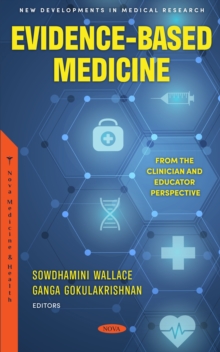
Oregano: Properties, Uses and Health Benefits PDF
Edited by Gema Nieto Martinez
Part of the New Developments in Medical Research series
Description
Humans have employed medicinal plants for thousands of years in traditional medicine. Oregano has been cultivated mainly for centuries in the Mediterranean area, although it now can be found on most continents. Oregano is one of the most popular plants in Spanish traditional remedies and its leaves have been used in traditional medicines in order to treat illness such as aching muscle, skin sores, asthma, digestion disorders, infections, inflammation or maintaining general health.
In addition, oregano has been used since ancient times as an ingredient in Mediterranean diet.
In this sense, there are several species of oregano, being Spanish thyme or Origanum vulgare, the spice variety sold most in the United States and Europe.
Nowadays the use of oregano is not exclusive for culinary proposes, because the consumers' concerns about the use of synthetic additives into foods have led the food industry to the search for green strategies.
In this sense, oregano extracts, essential oils and individual compounds from this herb have demonstrated antioxidant, anti-inflammatory, anticancer, and antimicrobial actions, which may contribute to the capacity to avoid human infections or to protect the cardiovascular and nervous systems by blood glucose and lipid modulation.
Therefore, based on the current scientific literature, oregano essential oil can be considered as a rich source of bioactive compounds and its addition to food matrices transmit these benefits; this approach can be used as a tool to generate functional foods.
This book reviews and discusses oregano containing several potent antimicrobial, antioxidant compounds that may contribute to benefit the nervous and cardiovascular systems.
In addition, the opportunity of using Origanum vulgare as potential platform for producing polyphenols, biogas and energy under biorefinery approach has been discussed.
Moreover, the possibility to be added into foods as natural additives and a strategy in order to improve human health was also discussed.
In this sense, the inclusion of oregano into meat products, yogurt, juices and others could be an interesting strategy to produce functional foods.
The oregano extract and essential oil represents a good strategy in order to substitute synthetic antioxidants and to produce functional foods with an extended shelf life.
Several industries are now looking for sources of new, natural and safe agents.
Essential oil from Origanum spp. has shown efficacy retarding lipid oxidation in food matrices. Oregano essential oil possesses strong antimicrobial activity against food pathogen bacteria highlighting its potential as a tool to achieve food safety. Oregano essential oil has shown efficacy in reducing microbial growth of deteriorative microorganisms (bacteria, yeast, molds), representing the potential to increase shelf-life of food. Oregano essential oil can be considered as a rich source of bioactive compounds and its addition to food matrices transmit these benefits; this approach can be used as a tool to generate functional foods.
Results obtained from numerous studies can help to exploit the use of the Origanum EOs studied as the functional food and pharmacological ingredients for promoting health.
Information
-
Download - Immediately Available
- Format:PDF
- Pages:334 pages
- Publisher:Nova Science Publishers, Inc.
- Publication Date:09/10/2019
- Category:
- ISBN:9781536162851
Information
-
Download - Immediately Available
- Format:PDF
- Pages:334 pages
- Publisher:Nova Science Publishers, Inc.
- Publication Date:09/10/2019
- Category:
- ISBN:9781536162851










